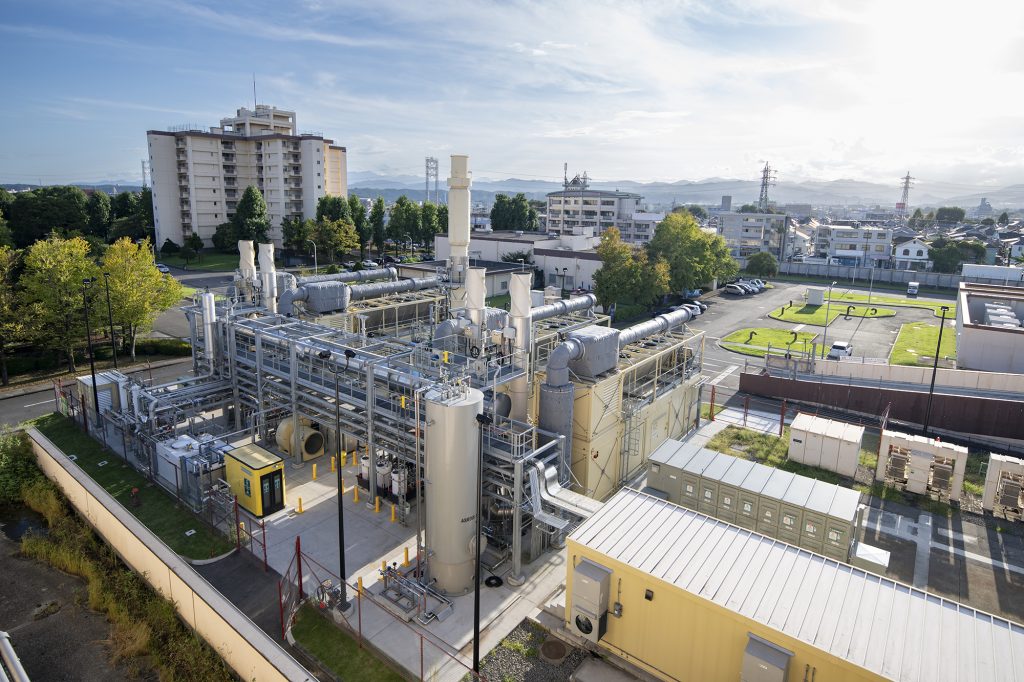Sponsored Content, Presented by Schneider Electric
Partnering with Schneider Electric for Innovative Energy Solutions
Yokota Air Base, formerly Tama Army Airfield, was opened in 1940 by the Imperial Japanese Army as a flight test center during World War II. While the installation was targeted in eight attacks during the war, it was never bombed due to heavy cloud coverage. U.S. forces assumed control of the base in 1945, after which it became the Pacific hub for strategic airlift.

Critical to U.S. military operations today, Yokota Air Base, located 28-mi from downtown Tokyo, stands as a testament to strategic foresight and international cooperation. From its pivotal geographic location to its multifaceted contributions, the base exemplifies the synergy between alliance-building, power projection, and humanitarian aid. The base serves as a hub for U.S. military activities in the Pacific, allowing for rapid responses across the region, enhancing stability for the United States and our allies.
In an ever-evolving landscape of geopolitical complexities, security challenges, and more frequent grid disruptions, Yokota must remain strategically positioned to ensure the rapid deployment of personnel, aircraft, and resources. In response to these complexities, the base has committed to a comprehensive plan to optimize energy demand and supply, enhancing mission readiness while also safeguarding national security.
CHALLENGE: Achieve Operational Continuity Amid Increasing Unexpected Grid Outages
Yokota Air Base had been encountering difficulties in maintaining reliable energy supply because of aging grid infrastructure as well as storm-related events.
These challenges manifested as frequent power outages—a risk that drove the need for a more comprehensive and automated solution to maintain service to the critical electrical and thermal loads on base.
SOLUTION: Energy Savings Performance Contract With Resiliency as Primary Driver
The base required a comprehensive solution that would not only improve energy efficiency, but also enhance its resiliency, reduce energy consumption, and maintain operational continuity during grid disruptions, ensuring power quality and reliability.
Schneider Electric evaluated Yokota Air Base’s site and utility data over a two-year period, along with more than 750 buildings on base, and collaborated with numerous stakeholders in order to identify opportunities and priorities to build a comprehensive energy strategy.
The resulting solution, self-funded with guaranteed energy and water savings, includes a combined heat and power plant with microgrid controls that will alleviate growing concerns of power reliability in the area and support the base’s critical infrastructure.
In addition, energy and water conservation measures improve efficiency while addressing infrastructure challenges in a fence-to-fence solution across the base. These measures include central plant and distribution improvements, base-wide energy management control system upgrades and expansions, lighting and lighting control upgrades, variable frequency drive installation, transformer replacements, water fixture upgrades, and retro-commissioning.
With the understanding that military bases are dynamic and mission requirements may change, the microgrid and energy management control system solutions incorporated flexibility and growth capabilities for future automation and expansion. Specifically, microgrid controls were installed on every feeder at the west substation, providing maximum control down to the individual feeder level for any future expansion or mission changes to the base.
BENEFITS: A Mission-Driven Impact
- Enhanced Mission Readiness: The improved infrastructure enables the base to maintain continuous operations, even during grid disruptions, and fully sustain mission-support.
- Increased Energy Resiliency: The comprehensive microgrid solution ensures the base remains operational while making it more self-sufficient and resilient to potential threats and disruptions.
- Cost Savings: The energy-efficient upgrades and optimized generation result in significant cost savings, allowing for the allocation of resources to other critical areas.
- National Security Contribution: By strengthening the base’s infrastructure, the project contributes to the overall national security, ensuring that it can effectively support defense efforts.
- Environmental Impact: The energy-efficient upgrades reduce the base’s carbon footprint.
- Sustainability Goals: The comprehensive energy strategy aligns with the Air Force’s sustainability and decarbonization goals, contributing to a more environmentally responsible military presence in the area.
CONCLUSION: Strengthening Capabilities
With Schneider Electric as its trusted consultant, implementation partner, and long-term support provider, Yokota Air Base is on track to achieve its goals for energy resiliency, reduce base-wide energy consumption, and improve operational efficiencies.
Yokota Air Base is an example of the power of innovative energy solutions in strengthening the capabilities of the U.S. armed forces, helping to ensure their continued success in protecting national interests across the globe.
More News from TME
-

Professional Licensure
The National Council of Examiners for Engineering and Surveying (NCEES) is a nonprofit organization dedicated to advancing professional licensure for engineers and surveyors. -

SAME DC & Baltimore – Sun. May 18 – Tour the N.S. Savannah (Free Event!)
Join the SAME DC & Baltimore Posts as we celebrate National Maritime Day 2025 with the N.S. Savannah Association for an open house tour of the N.S. Savannah on Sunday, May 18 from 10 am – 4 pm (Meet up at 1:30 pm). This event is free and open to the public. No RSVP is […] -

Electrifying Solutions for Military Installations
As military installations implement electrification measures into the future, the challenges they face will not just require innovative technology solutions but embracing a holistic delivery approach implemented early in projects.